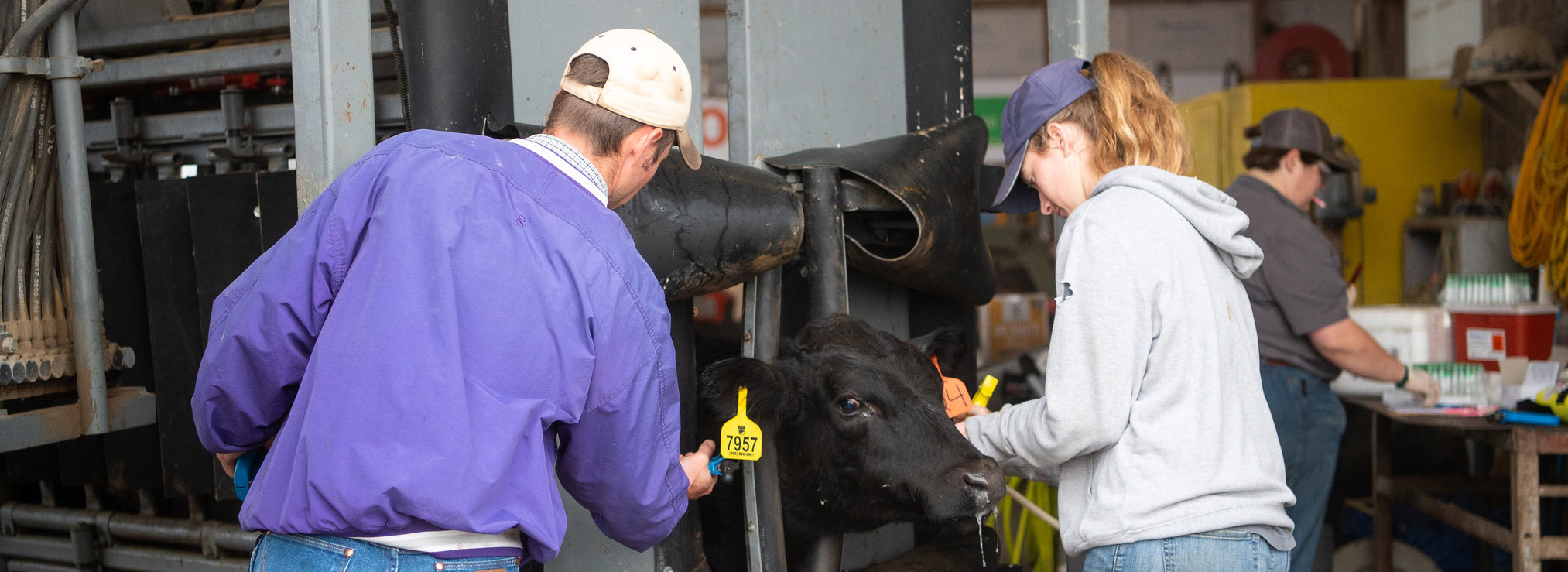
A calf receiving vaccinations. | Download photo
Cattle Chat: Vaccination limits
K-State beef cattle experts share advice on vaccination protocols
At a glance: K-State Beef Cattle Institute experts discuss the risks of giving too many injections to cattle at once, and offer protocols to consider.
More information: Brian Lubbers, 785-532-4012, blubbers@vet.k-state.edu; Brad White, 785-532-4243, bwhite@vet.ksu.edu
Related: Beef Cattle Institute Cattle Chat
Oct. 22, 2024
By Lisa Moser, K-State Research and Extension news service
MANHATTAN, Kan. – In the fall, many folks get a series of annual vaccinations to help prevent severe sickness from a cadre of illnesses. Often, they turn to a medical professional to find out which vaccines may be given at the same time to limit their trips to the immunization clinic.
As with people, there are times in the year when cattle are given a series of shots to prevent illnesses, and that leads one to ask if there is a limit to the number of vaccinations that cattle can receive at one time.
That is the question Kansas State University Beef Cattle Institute veterinarians Brian Lubbers and Brad White answered on a recent Cattle Chat podcast episode.
“We need to be careful when administering bacterial vaccines that contain a lot of endotoxins because if the animal is exposed to too much endotoxin, it could go into shock,” Lubbers said. “Some believe giving multiple shots -- let’s say five -- at once can overwhelm the animal’s immune system, (thus) causing a lesser immune response than if those were given at different times.”
To keep the animal’s body from getting overwhelmed, Lubbers recommends spacing out the vaccinations.
“Timing of vaccinations matters, so maybe you give three in the spring and three in the fall instead of giving six at once,” Lubbers said.
The length of the immunity the vaccine provides is also variable, White said..
“There are some antigens or individual pathogens that we would expect a short-term immunity of six months to one year, and there are others that will provide a longer immunity,” White said. “Also, the protocol for cows and our ability to space out these shots is different than it is in calves.”
White advised producers to talk with their local veterinarian to make a plan. Ask the following questions:
- What is being administered in the current vaccination protocol?
- Is there something missing that we should add?
- What diseases have we seen in our herd?
- What diseases are in the area?
- What biosecurity practices should we be following when cattle are moved in and out of the herd?
To hear the full discussion listen to Cattle Chat on your preferred streaming platform.
***

K‑State Research and Extension is a short name for the Kansas State University Agricultural Experiment Station and Cooperative Extension Service, a program designed to generate and distribute useful knowledge for the well‑being of Kansans. Supported by county, state, federal and private funds, the program has county extension offices, experiment fields, area extension offices and regional research centers statewide. Its headquarters is on the K‑State campus in Manhattan. For more information, visit www.ksre.ksu.edu. K-State Research and Extension is an equal opportunity provider and employer.